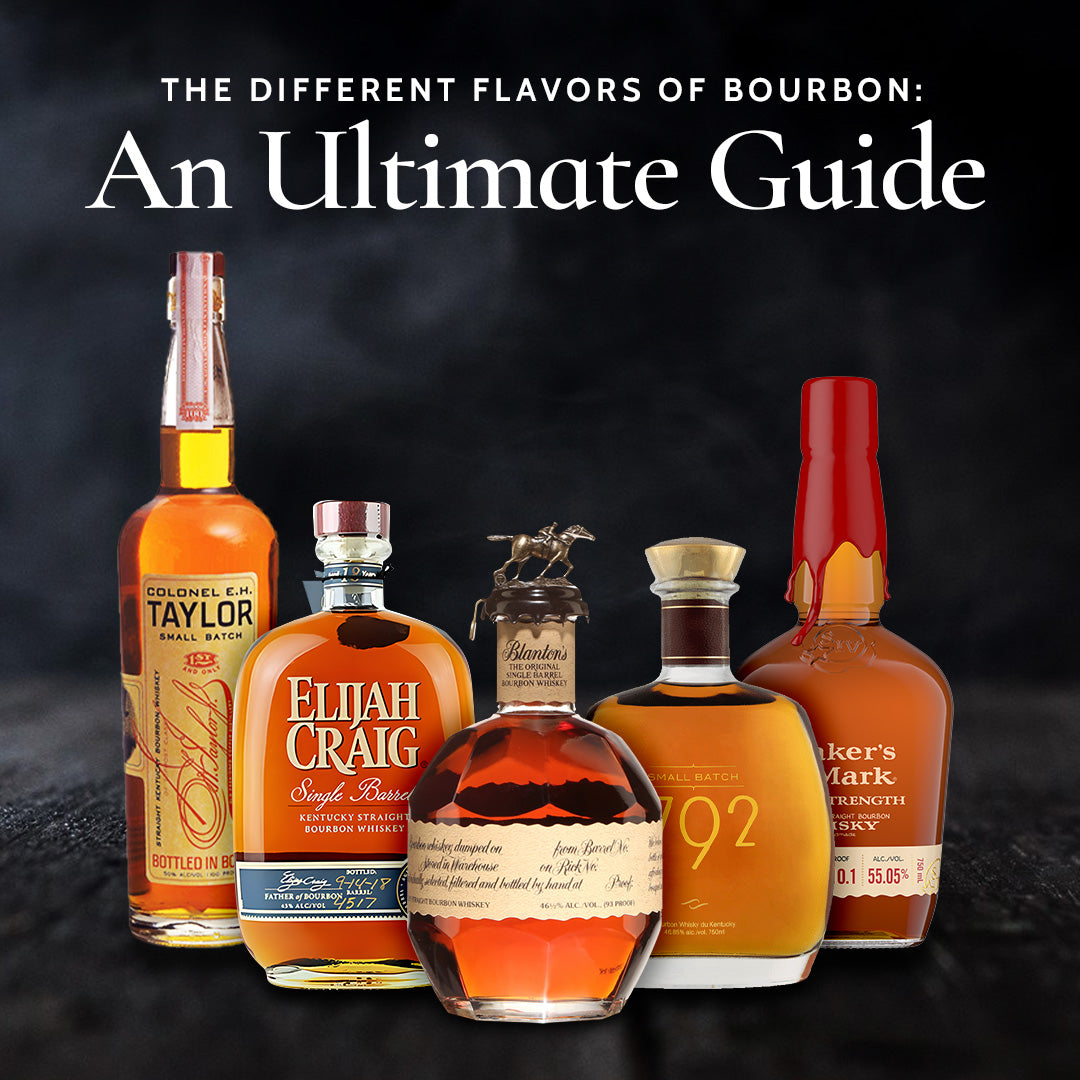Bourbon, the beloved American spirit, is renowned for its distinctive production process and diverse array of flavors. Because every bourbon bottle varies depending on factors such as mash bill, distillation process, and barrel maturation, it can be challenging to describe the flavor of bourbon. Some bourbons are usually sweeter, spicier, or more delicate than others, so we've curated a guide to help you categorize bourbon's different aromas and flavors. Whether you're a seasoned enthusiast or new to the world of bourbon, this comprehensive guide will walk you through the diverse and intricate flavors that make bourbon an unparalleled sensory experience.
The Basics of Bourbon
Before we embark on our journey through the world of bourbon flavors, let's start with unveiling the basics. What exactly is bourbon? Bourbon is a type of American whiskey primarily made from a grain mixture that includes at least 51% corn. It is known for its distinct and rich flavor profile, often including notes of vanilla, caramel, and oak. Here are a few characteristics that define bourbon:
Ingredients
For a whiskey to be considered bourbon, it must contain at least 51% corn. The remaining part of the mash can be filled out with malted barley, wheat, or rye.
Aging
Bourbon is aged in new charred oak barrels, which gives it its characteristic flavor, color, and aroma. There are no specific aging requirements for bourbon, but for it to be considered "straight bourbon whiskey," it must be aged for a minimum of two years.
Distillation
The distillation process for bourbon typically involves distilling the spirit to no more than 160 proof (80% ABV) and entering the barrel for aging at no more than 125 proof (62.5% ABV).
No Additives
Unlike other whiskeys (Irish, Scotch, Canadian), where flavor additives and coloring may be present, bourbon should maintain an authentic and pure profile.
Bottled in Bond
According to the original definition provided by the Bottled-in-Bond Act of 1897, bourbon designated as Bottled in Bond must have been produced during a single distilling season at a single distillery, aged for at least four years in a federally bonded warehouse, and bottled at 100 proof. Additionally, only American whiskeys are permitted to have the Bottled in Bond label; any such bourbon label must specify the distillery where the spirit was produced and bottled.
Unraveling Bourbon Flavors
With its complex flavors and captivating aromas, bourbon is more than just a liquor; it's a sensory adventure that unfolds with each sip. Whether you are a seasoned enthusiast or a newcomer to the bourbon world, understanding this famous whiskey's taste profile is crucial for fully appreciating its intricate flavors and embracing the experience.
Vanilla and Caramel
Vanilla and caramel are probably the most common tasting notes people pick up when drinking bourbon. These bourbon flavors are a result of the interaction between the spirit and the charred oak barrels. They contribute a sweet, smooth, and sometimes buttery character to the bourbon, which balances and deepens the flavor profile beyond wood and grain.
Examples of vanilla- and caramel-forward bourbons:
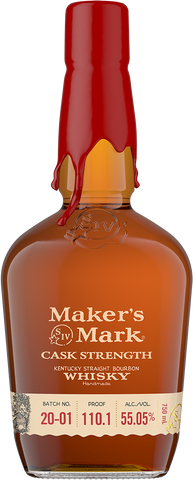


Woody
Since bourbon is aged in charred oak barrels, wood is going to be a major flavor note. These barrels impart woody and smoky flavors to the spirit, leading to deeper, toasted notes of roasted nuts and campfires over time. Woody and smoky flavors can be more pronounced in older bourbons with extended aging periods.
Examples of wood-forward bourbons:
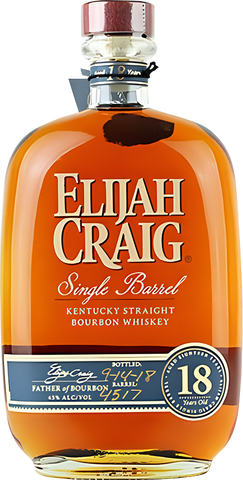


Grains
Given that grains are the core of the production process, it makes sense that some flavor profiles lead with notes of grains. Corn, barley, rye, and wheat all contribute to the overall flavor profile of bourbon. However, it's factors such as the mash bill, the location of the rick house, and the distillation process that determine how predominant grains will be in the flavor profile of the bourbon in question.
Examples of grain-forward bourbons:



Fruit and Floral
While it may be difficult to understand how blends of wheat, rye, corn, or barley could combine to produce fruity or floral flavors in bourbon, these flavors result from esters created during the fermentation process. Different esters lead to varying fruity and floral notes. You might detect fruity flavors like cherry, pear, or apple, as well as subtle floral undertones that add a layer of elegance to the overall experience.
Examples of fruit- and floral-forward bourbons:

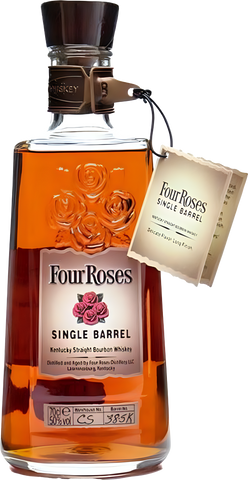

Spicy
The inclusion of rye in the grain mash bill can introduce a spicy flavor profile to bourbon. The average bourbon has about 12% rye, but those with spicy rye flavor profiles typically include 20% to 35% rye in their mash bills. Rye-based bourbons often feature notes of cinnamon, cloves, and black pepper. The spiciness adds complexity to the palate and balances the sweetness, creating a harmonious interplay of flavors.
Examples of spicy-forward bourbons:
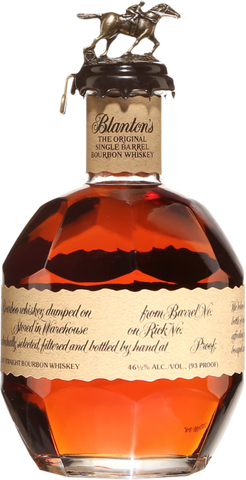
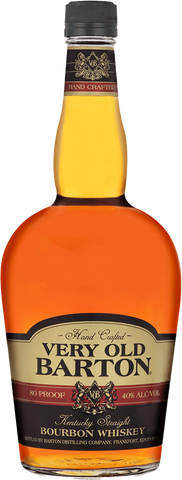

How to Taste Bourbon
There is a huge difference between drinking and tasting bourbon. If you want to get drunk, go ahead and down the spirit to the last drop. But if you wish to truly experience the distinctive flavors of bourbon, you need to learn the proper way to taste bourbon.
Step 1: Pour your bourbon into a whiskey glass. A good tasting always starts with the appropriate glassware. The Glencairn glass is a great choice. It's clear, and you can easily detect the subtle flavors because the glass is designed to direct aromas to your nose while you sip your drink. If you don't have a Glencairn glass, you can use any other specialized whiskey glass.
Step 2: Observe the color and viscosity of the bourbon. Appearance plays a significant role in the tasting process. Generally, the lighter the bourbon, the softer it will taste.
Step 3: Skip the swirl, but smell the bourbon to identify the various scents. Anyone familiar with wine tasting knows that swirling is crucial for getting the aromas of the wine to your nose. However, because bourbon has a higher alcohol content than wine, swirling can convey aromas and alcohol vapors. So avoid swirling your glass and dipping your nose all the way into the glass – this can burn your nostrils. Instead, softly inhale while holding the glass a few inches below your nostrils. Are the aromas bright and fruity? Floral? Or are they spicy?
Step 4: Once you have experienced the aroma, it's time to taste the bourbon. Take a small sip and let it coat your palate. Note the initial flavors and any evolving ones. If the first try wasn't successful, you can take a second sip.
Step 5: Pay attention to the finish, which is the lingering taste after swallowing. Some bourbons have a short, crisp finish, while others are long and complex. Regardless, it's important to take time to appreciate and experience the finish between sips.
Step 6: Experiment with water. Every master distiller knows that adding a few drops of water can unleash different flavors. Letting the bourbon breathe for a few minutes can also reveal additional nuances.
The most important rule to remember about bourbon tasting is that not everyone will taste the exact same thing. The flavors can also vary depending on the kind of bourbon you're drinking. So, when you hear someone say that a particular bourbon tastes like "Christmas," and you can't relate, that's okay. You don't have to taste the same thing as everyone else. Our palates are different.
Conclusion
The flavors found in bourbon are as diverse as the craftsmanship that goes into creating each bottle. So whether you prefer the warmth of rye or the sweetness of vanilla and caramel, bourbon offers a captivating array of flavors and aromas for every palate.
FAQs
What's the Difference Between Bourbon and Whiskey?
Bourbon is the term for an American whiskey made from a grain blend that's at least 51% corn, while whiskey is a general term for an alcoholic liquor made from fermented mashed grains.
How Do I Differentiate Between Various Bourbon Flavors?
Start by taking a little bit of it at a time and try to focus on the range of flavors and aromas. Let it linger on your palate for some time so that you identify the primary and evolving flavors. The finish will also give you insights into the taste profile.
What Does Adding Water to Bourbon Do?
Adding a few drops of water to bourbon can open up its flavors by reducing alcohol intensity. However, the amount of water you should add is a personal choice.
How Can I Improve My Bourbon Tasting Skills Over Time?
Patience and practice are key. Keep tasting and comparing different bourbons to refine your palate. You can read tasting guides, take notes, and consider joining tasting clubs to learn from others.

